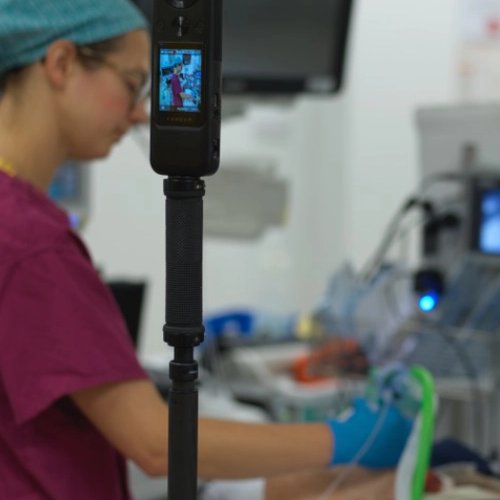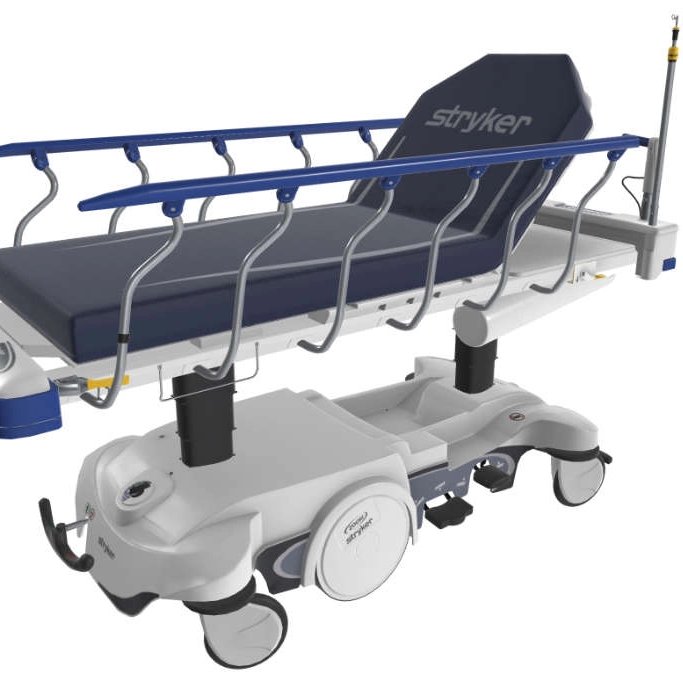Contact Us
+44 20 32897141 / 1 Pickle Mews, London, SW9 0FJ
Review: Meta Quest 3
Published
Oct 14, 2024
Tags
Jonny’s Meta Quest 3 review looks at the pros and cons of the headset for medical VR training.
Headset: Meta Quest 3
Manufacturer: Meta
Price point: Competitive
Our verdict
“Great all-round headset with accurate hand tracking and a great example of pass-through being utilised nicely.”
Jonny Abbas, Medical Director at ExR Education
About the Meta Quest 3
It's been nearly a year since the Meta Quest 3 was released. In that time, the headset’s received gleaming reviews, from commentators highlighting how it’s ‘dramatically improved’ upon its predecessor (Quest 2) to The Independent stating it’s ‘the VR headset to beat’. It’s also Meta’s first foray into the realm of headsets that fuse immersive VR (virtual reality) and mixed reality.
Quest 3 boasts a six-strong suite of cameras to show real-world surroundings. Jonny, our Medical Director, tested these out at the ExR office in Oval, London. Read on for our take on how dramatic the improvement to the third iteration of the Meta Quest is.
Meta Quest 3: Key features
1. Screen resolution
Two LCD displays with a resolution of 2064 x 2208 pixels per eye make for clear and vivid pictures. Combine this with the 110° horizontal and 96° vertical field of view, and it’s no wonder the mixed reality experience is a vibrant and colourful one.
2. Weight and ergonomics
At 515g, the Quest 3 is marginally heavier than the Quest 2 (503g). But given how much comfier the fit is, it’s a difference that weighs insignificant. Thanks to the Y-shaped spacer at the back of the elasticated head strap, the headset feels fairly secure – ideal to aid movement in a world of mixed reality. The addition to the weighted battery strap improves comfort considerably, but of course comes with an additional cost.
The accompanying (and now branded) ‘Touch Plus’ controllers come in at a 126g each, relatively lightweight when compared to Meta’s ‘Pro’ model (164g each). With improved haptics, Touch Plus puts the Quest 3 in its own realm in terms of the most realistic interactions with virtual objects we’ve felt. (At point of writing, at least.)
3. Hand tracking
Yet there’s no need to fork out a few hundred pounds on Touch Plus controllers if you can get to grips with the Quest 3’s hand tracking technology. The headset’s inside-out cameras can now detect not only the position and orientation of your hands, but the configuration of your fingers, too, enabling you to replace controllers with your own limbs. Think pointing, pinching, scrolling, and more.
4. Pass through
Unlike previous models, pass through is enabled by default in the Quest 3 – and it’s in full colour. Your surroundings reflect the rainbow from the second you put the headset on, making the mixed reality experience far superior to the standard black-and-white one we’ve been accustomed to. There is still some residual grain and degradation of the image – especially in low-light. But this is common to all mobile devices.
The Meta Quest 3: In action for orthopaedic procedure training
Earlier this year, Robert Jones and Agnus Hunt Orthopaedic Hospital collaborated with our medical VR training experts to develop an immersive learning experience of their total knee replacement surgery. Thanks to the operating theatre and procedure being replicated in full 360° VR, clinicians use the Meta Quest 3 to relive and ‘practise’ the orthopaedic surgery. It’s as close to being in the room (without actually being in the room as possible), empowering staff with the added bonus of being able to ‘move’ within the theatre and ‘interact’ with tools and objects.
What we don't like
For all its qualities above, the Meta Quest 3 doesn’t come without its cons. Like the Quests before it, the interface is somewhat cumbersome, and navigating it can become a source frustration. Then again, Meta might be leaving something to be desired for the next generation of the Quest.
It could be to do with the sheer amount of content the App Library hosts. Which also hosts another gripe – you’re still unable to group apps into folders or even sort them alphabetically. If you opt for the 512GB model, here’s your warning that your library is going to get crowded – and fast.
Disappointingly, we found it doesn’t get much easier once you’ve found the app you’re trying to open. Given ‘not working’ is the first suggestion when ‘Meta Quest 3 casting’ is typed into Google, it seems we’re not the only ones. Casting is unreliable, leaving us feeling frustrated. We love to demo the ExR platform online, and casting has to work every time.
Trying to connect the headset connect to Eduroam internet (the international Wi-Fi roaming service for users in research, higher education and further education) was another source of annoyance we came up against. But with help from our friends over in IT support, we got there in the end. Nevertheless, it’s useful to know if you’re in academia and looking to VR to support your learning programme.
Is it worth it?
All the above grievances said, the sheer advancements of the Quest 3 means we give an enthusiastic ‘yes’.
- It's competitively priced, on the market for between £479.99 (128GB) and £619.99 (512GB).
- You can use it to access a vast amount of content (now the main App Library has merged with App Lab, where VR developers can list and share their titles with users).
- The visuals are second to one – full colour pass through in high-resolution makes way for a clear and clean picture and gets us excited about what’s to come next.
Using the Meta Quest 3 with ExR Education’s medical VR
Jonny used a variety of ExR content with the Meta Quest 3 to produce this review. So, the good news is the Quest couples well with our collections of medical VR experiences. The better news is you needn’t worry about shelling out half a grand to do the same if you don’t want to. All our medical VR training films can be accessed on the ExR platform, free to anyone with a NHS login.
Start your quest with ExR
Click here to find us on the Meta App Store or click here to join the ExR Education community.
Most recent posts
Like what you read?
Please get in touch with us.



